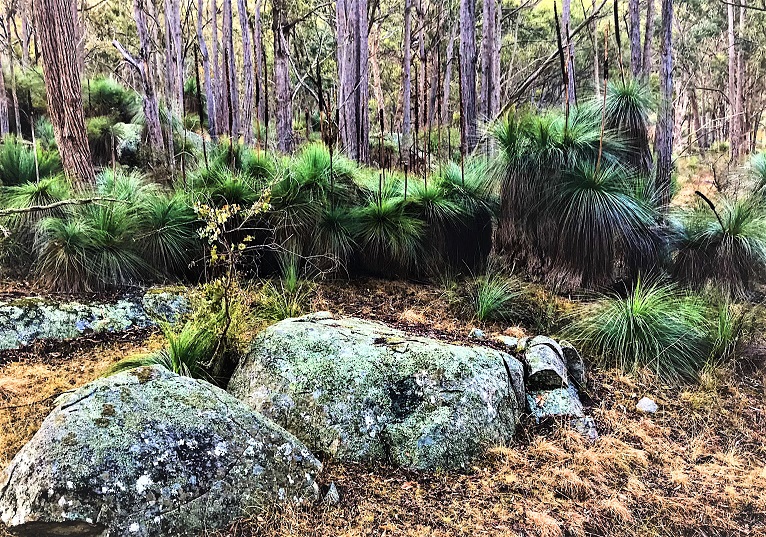Biodiversity losses have been a natural process throughout earth’s history, however since the 1980’s extinctions have been rapidly increasing (McCallum, 2015) as humans continually create changes to up to 50% of the earth’s surface (Crutzen & Steffen 2003). We are suffering from a tendency to underestimate these extinctions through human induced climate change impacts, as we continue to accelerate human populations, carbon emissions, anthropogenic waste, ocean acidification, and by wiping out all of earth’s natural resources (Mann, Lloyd & Oreskes 2017).
Fossil records show that all species have appeared and disappeared throughout world history (McCallum, 2015) with five previous major extinction events (Crutzen & Steffen 2003). The first was the onset of an Ice Age in the Late Ordovician period which resulted in 85% of species lost (Botting et al, 2017). The second in the Late Devonian period, as a result from a combination of cosmic impacts and volcanic eruptions which caused the mass extinction of approximately 70-82% species (Barash, 2016). Extreme losses in both marine and terrestrial species were then experienced in the third extinction event at the end of the Permian period, due to the rapid and extensive releases of thermogenic CO² and methane (Shen et al, 2011). The fourth event was at the end of the Triassic period where it is believed that approximately 76% of all species became extinct due to an accumulation of volcanic eruptions, sea level changes and the ‘breakdown of zonal climate belts’ (Tanner, Lucas & Chapman, 2004). During the fifth extinction event, in the Cretaceous period, there was a loss in 70-80% for all marine life and a ‘50% reduction at a genus level’ explains Jablonski & Raup (1995). While its cause was a huge asteroid impact Pollack et al (1983) explains that it ‘caused fine dust to be ejected into the Stratosphere’, causing the sun to be blocked out and photosynthesis to stop for several years.
We are now in the Anthropocene era, the age of the humans, where human population has exploded, and we have urbanized and industrialized most places on earth (Ali & Khan, 2017). This is a new era of which humans, who believe it’s their right, have exploited and changed all-natural systems and resources on earth (Gills, 2015). Gills (2015) also explains that in doing this ‘we are fast approaching the ultimate environmental limits’, and that our pattern of continual expansion is unsustainable because we don’t live on a limitless earth.
Since the late 1800’s our mismanagement of the earth has resulted in the change in earth’s climate, environmental pollution and the extinction of many of the world’s species of plants and animals (Ali & Khan, 2017), and it seems that we are accelerating the speed of extinctions faster than any other time in world history (McCallum, 2015). In this self-absorbed and destructive manner, we are affecting our own life support system beyond our own comprehension (Ali & Khan, 2017).
Extinctions have exploded since the 1980’s faster than any other extinction event in history, however unlike the patterns of the past there are no pattern to extinctions like in other ‘previous geological scenarios’ (McCallum, 2015). According to Myers et al (2000) ‘the number of species threatened with extinction far outstrips available conservation resources, and the situation looks set to become rapidly worse’.
Mass extinctions take millions of years to recover and Anthony et al (2011) explains that ‘of the 4 billion species estimated to have evolved on Earth over the last 3.5 billion years some 99% are gone’. In realizing this we have to recognize that the number of species that are thought to be extinct now is possibly a huge understatement, as we still haven’t identified all species on Earth (Anthony et al 2011). There are also currently 7.7 Billion people on the planet (Worldometers, 2019) and this number is increasing every second. Over the past 60 years earths land surface has changed dramatically with the increase in human population, and we humans have been adapting to all environments worldwide (Small & Sousa, 2016) like never before.
The situation that the earth is in is sadly a result of human population and bad governance. We need to start addressing what it means to have responsible stewards of our life support system. Since the 1980’s (Mooney, Duraiappah & Larigauderie, 2013) we have been required to develop conservation initiatives that will safeguard certain areas with the greatest need (Myers et al, 2000). Myers et al (2000) explains that ‘there are 25 hotspots, which contain the sole remaining habitats of 44% of the Earth’s plant species and 35% of vertebrate species, and these habitats face a high risk of elimination.’ If we do not intervene now and in the future, we are likely to lose most species and all-natural ecosystems.
So, it seems we are definitely in the midst of the Earths 6th Mass Extinction Event. All research is currently concluding that we are losing species internationally at a rate that has never been experienced before in human history. The pressures of the increasing human population and their requirements to house and feed everybody is a pressure that’s too great for earth, its whole ecology, and the other species that inhabit it.
Our human need to have everything, not ever going without anything, and the continuation of being self-absorbed and destructive without realization, is literally killing the very thing that keeps us alive – EARTH.
We need to dramatically stop climate change and environmental pollution, and start being ‘responsible stewards’ of earth. However, the question now is HOW do you change the way 7.7 billion people live on earth?
Myra Christine
References:
- Ali, H., & Khan, E. (2017). Environmental chemistry in the twenty-first century. Environmental Chemistry Letters, 15(2), 329-346.
- Anthony D. Barnosky, Nicholas Matzke, Susumu Tomiya, Guinevere O. U. Wogan, Brian Swartz, Tiago B. Quental, . . . Elizabeth A. Ferrer. (2011). Has the Earth’s sixth mass extinction already arrived? Nature, 471(7336), 51-57.
- Barash, M. (2016). Causes of the great mass extinction of marine organisms in the Late Devonian. Oceanology, 56(6), 863-875.
- Crutzen, P., & Steffen, J. (2003). How Long Have We Been in the Anthropocene Era? Climatic Change, 61(3), 251-257.
- Gills, B. (2015). Global Development in the Anthropocene. Globalizations, 12(5), 1-4.
- Jablonski, D., & Raup, D. (1995). Selectivity of End-Cretaceous Marine Bivalve Extinctions. Science, 268(5209), 389-391.
- Mann, M., Lloyd, E., & Oreskes, E. (2017). Assessing climate change impacts on extreme weather events: The case for an alternative (Bayesian) approach. Climatic Change, 144(2), 131-142.
- McCallum, M. (2015). Vertebrate biodiversity losses point to a sixth mass extinction. Biodiversity and Conservation, 24(10), 2497-2519.
- Mooney, H., Duraiappah, A., & Larigauderie, A. (2013). Evolution of natural and social science interactions in global change research programs. Proceedings of the National Academy of Sciences of the United States of America, 110, 3665.
- Myers, Norman; Mittermeier, Russell A; Mittermeier, Cristina G; Gustavo A B da Fonseca; Kent, Jennifer (2000). Nature; London Vol. 403, Iss. 6772, (Feb 24, 2000): 853-8. DOI:10.1038/35002501
- Pollack, James B., Toon, Owen B., Ackerman, Thomas P., McKay, Christopher P., & Turco, Richard P. (1983). Environmental effects of an impact-generated dust cloud: Implications for the cretaceous-tertiary extinctions. Science, 219, 287.
- Shen, Y., Farquhar, J., Zhang, H. et al. Multiple S-isotopic evidence for episodic shoaling of anoxic water during Late Permian mass extinction. Nat Commun 2, 210 (2011). https://doi.org/10.1038/ncomms1217
- Tanner, L., Lucas, S., & Chapman, M. (2004). Assessing the record and causes of late Triassic extinctions. Earth – Science Reviews, 65(1/2), 103-139.
- Worldometers (2019) http://www.worldometers.info/world-population/








Suzanne Lee
Isn’t it about time we started to listen to Myra and at least take a moment to consider the implications of her research? We just can’t keep exploiting our planet the way we have been and living the way we are.
We humans in Australia have just experienced a catastrophic summer and I don’t need to emphasise what has occurred in our country. I think the devastation has impacted on everyone of us in some way.
Myra is a beautiful, selfless and caring person. She is not interested in fame and fortune, she just wants to make a difference. I have witnessed Myra coping with her studies in Zoology at the University of New England, Armidale. She balances this with family life and finding time to devote to her passion and she wants to be taken seriously.
She deserves support because her projects are totally self funded at the expense of denying herself many of the “luxuries” that are taken for granted by many.